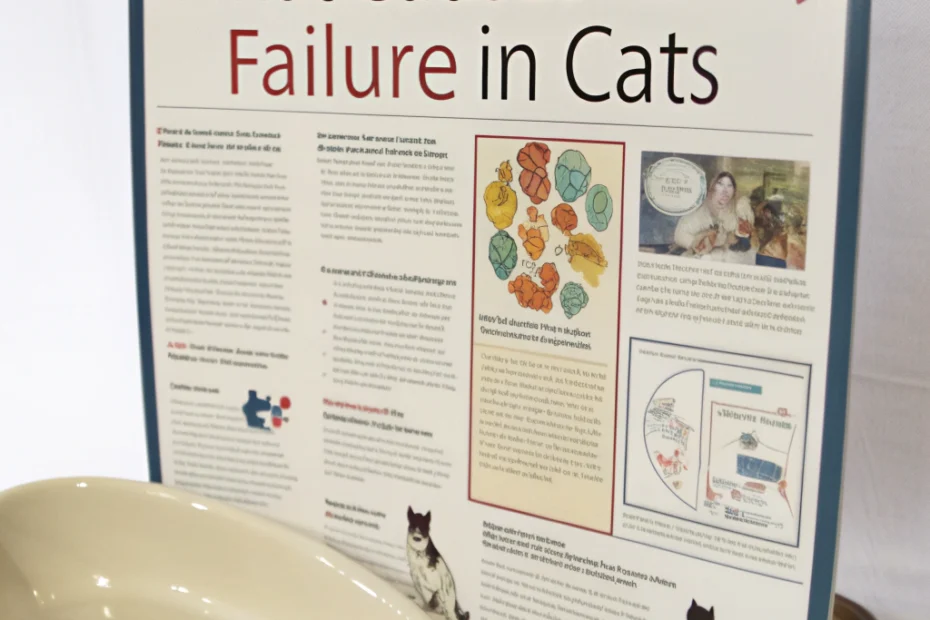At a Glance
- Kidney (renal) failure impairs waste removal, fluid balance, and electrolyte regulation.
- Early recognition and a vet-guided plan can slow progression and improve quality of life.
- Core tools: renal diets, hydration strategies, regular lab monitoring, and stress-light routines.
- This overview supports—not replaces—your veterinarian’s advice.
Common Signs & Possible Causes
- Signs: Increased thirst/urination, weight loss, reduced appetite, nausea/vomiting, lethargy, bad breath, dehydration, dull coat.
- Causes (examples): Chronic kidney disease (age-related degeneration), prior infections, toxins (e.g., lilies/ethylene glycol), stones/obstructions, congenital disorders, high blood pressure, or acute injuries to the kidneys.
How to Choose a Management Approach
Your veterinarian will stage disease (e.g., via bloodwork, urine tests, blood pressure) and personalize care. Options commonly include:
- Specialized renal diets: Controlled phosphorus, adjusted high-quality protein, added omega-3s; proven cornerstone in CKD management.
- Hydration support: Canned food, multiple water stations, fountains, and (when prescribed) subcutaneous fluids at home.
- Nausea/appetite support: Vet-approved anti-nausea, antacid, or appetite-stimulant medications when needed.
- Phosphate binders: Added if blood phosphorus remains high despite diet.
- Blood pressure & proteinuria control: Medications and monitoring if hypertension or urinary protein loss is present.
- Supplements: Only if your vet recommends (e.g., potassium, B-vitamins); avoid “one-size-fits-all” products.
Safety & Setup
- Vet first: Discuss any new food, supplement, or fluid plan with your veterinarian before starting.
- Slow transitions: Shift to renal diets over 5–7 days (or longer for picky eaters) to minimize GI upset.
- Medication accuracy: Give only prescribed meds; never use human pain relievers (e.g., ibuprofen, acetaminophen).
- Monitor at home: Track appetite, water intake, urination, body weight, energy, vomiting/diarrhea.
Core Pillars of Ongoing Care
- Nutritional balance: Consistent use of a renal diet is the single most impactful change for many cats.
- Hydration: Prioritize moisture—wet food, fresh water access, vet-directed fluids.
- Regular monitoring: Rechecks and labs on your vet’s schedule (often every 1–3 months, then as advised).
- Low-stress routine: Quiet spaces, gentle handling, predictable feeding times.
Home Placement & Environment Tips
- Easy access: Keep food, water, litter boxes, and beds on the same floor; add extra litter boxes for seniors.
- Comfort: Soft, warm resting spots away from drafts and household commotion.
- Water strategy: Multiple bowls/fountains; refresh daily. Consider wide, shallow bowls for whisker comfort.
- Pill pockets & feeders: Use vet-approved treats or pill devices; consider microchip feeders in multi-pet homes.
Comparison of Care Approaches
- Conventional veterinary plan (recommended): Staging + renal diet + targeted meds/fluids; strongest evidence and safety.
- Diet-only approach: Helpful but often insufficient once disease advances; usually paired with other therapies.
- Supplements alone: Not a substitute for diet/medical care; use only with veterinary guidance.
FAQs
Can kidney failure be cured?
Chronic kidney disease is typically managed, not cured. Early detection and consistent care can slow progression and enhance comfort.
What should my cat drink?
Fresh water anytime; many cats benefit from canned food and fountains. Ask your vet if subcutaneous fluids are appropriate.
What if my cat won’t eat a renal diet?
Try gradual transitions, warming food, different textures/flavors, or toppers your vet approves. Appetite/nausea meds can help.
How often are checkups needed?
Frequency varies by stage and stability. Many cats need rechecks every 1–3 months initially, then at intervals your vet sets.
Are “natural” remedies safe?
Some are incompatible with kidney disease or other meds. Always clear supplements with your veterinarian first.
When to Contact the Vet Urgently
- Complete refusal to eat for 24 hours, or rapid drop in appetite/weight.
- Persistent vomiting, severe lethargy, weakness, collapse, or neurologic signs.
- Straining to urinate, no urine output, or blood in urine.
- Labored breathing or marked dehydration.
Bottom Line
Managing kidney failure in cats centers on a renal diet, hydration, tailored medications, and steady monitoring. With your veterinarian’s guidance and a calm home routine, many cats enjoy good quality of life for years.
Medical disclaimer: This article is educational and not a substitute for veterinary care. Always consult your veterinarian for diagnosis and treatment specific to your cat.
